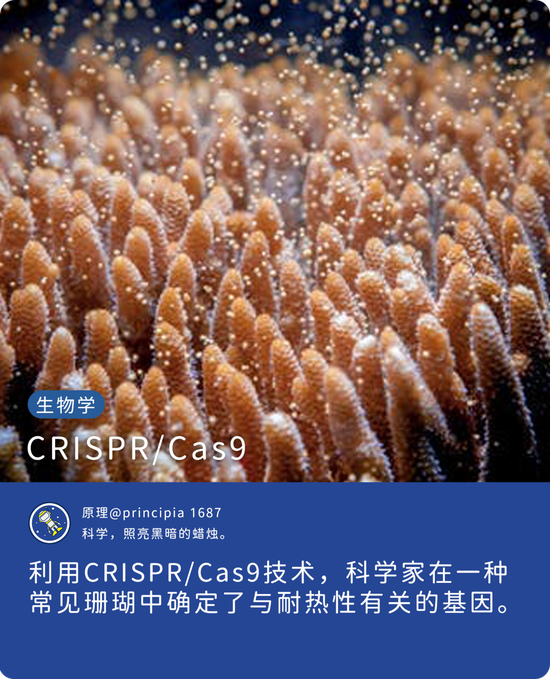K.O.连线| “蜘蛛”新手段帮忙恢复大量珊瑚颇有成效
加州大学戴维斯分校与Mars Symbioscience的合作研究项目显示,珊瑚礁即使因为爆炸捕鱼和“挖矿”而被严重损害,依然能利用一个成本相当低的方式大规模恢复。
该项研究的工作人员在印度尼西亚“珊瑚三角”中心的五英亩珊瑚中安装了11,000个小型六角形架子,称为“蜘蛛”。珊瑚三角区域的珊瑚多样性位于全球第一,但是因为过度捕捞、污染、气候变化等人类活动而遭受破坏。在2013年和2015年之间,研究人员把珊瑚碎片贴在“蜘蛛”上来稳定碎石,同时使水能够自由流通。“蜘蛛”技术和恢复项目帮助大量珊瑚礁以及依赖于它们的生物团体更好地生存,让珊瑚礁能更好地适应逐渐恶化的海洋条件。
架子上的活珊瑚量从一开始的不到10%逐渐增加至60%以上,超越了许多其他珊瑚三角区域的珊瑚礁数量,而且成本才25美元一立方米。合作作者Christine Sur说,“全球的珊瑚礁恢复项目正在迅速增多,不过成功的大规模项目依然较少。”
更令人惊讶的是,2014年至2016年之间发生的大量珊瑚漂白事件虽然毁灭了其他地区的珊瑚礁,但即使生存在在易损害珊瑚的暖水条件中,恢复项目区域内的漂白率依然不到5%。
该项研究合作伙伴Mars可持续性方案的副主席Frank Mars说,“这项研究是展示如何迅速并低成本地恢复大量珊瑚的一个重要步骤。健康的珊瑚生态系统可以保护海岸,是许多当地渔业的基础,还能给旅游业提供就业。它们在Mars供应链上起着重要的作用,我们多个品牌需要的原材料由依靠珊瑚礁获取食物安全和就业的家庭和社团来种植。对Mars来说,致力于珊瑚恢复工作不仅仅是因为我们的工作需要,更是为了确保依赖于它们生存的地球、人类能够健康繁荣发展。”
来源:美国加利福尼亚大学戴维斯分校
发布日期:2018年9月27日
译者:凯瑟琳·奥尔森
Even after being severely damaged by blast fishing and coral mining, coral reefs can be rehabilitated over large scales using a relatively inexpensive technique, according to a study led by the University of California, Davis, in partnership with Mars Symbioscience.
In the study, researchers installed 11,000 small, hexagonal structures called "spiders" across 5 acres of reef in the center of Indonesia's Coral Triangle. Coral diversity is the highest on Earth in that region but is threatened by human activity, including overfishing, pollution and climate change. Between 2013 and 2015, researchers attached coral fragments to the structures, which also stabilized rubble and allowed for water to flow through freely. The "spider" technique and restoration projects offer a way to rehabilitate large swaths of coral reefs and the communities that depend on them, giving the reefs a chance to adapt or acclimate to worsening ocean conditions.
Live coral cover on the structures increased from less than 10 percent to more than 60 percent. This was more than what was reported for reefs in many other areas of the Coral Triangle, at a cost of about $25 per square meter. "Coral reef rehabilitation and restoration efforts are rapidly increasing around the world, but there are few large-scale examples of successful projects," said corresponding author Christine Sur.
Of particular surprise, while massive coral bleaching decimated other parts of the world between 2014 and 2016, bleaching in the rehabilitation area was less than 5 percent, despite warm water conditions known to stress corals.
"This research is an important step in demonstrating how coral can be restored to a higher degree of cover quite quickly and at a relatively low cost," said Frank Mars, vice president of study collaborator Mars Sustainable Solutions. "Healthy coral reef ecosystems provide natural coastal protection and are the foundation for many local fisheries, as well as jobs for tourism. They also play a critical role in the Mars supply chain as they provide food security and work for the families and communities we rely on to grow the raw materials we use in our brands around the world. For Mars, helping restore coral reefs is not only a business issue, it's also the right thing to do to ensure the planet, people, and communities that rely on them are healthy and thriving."















